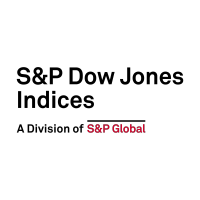Tag Archives: Risk-Adjusted SPIVA
Risk-Adjusted SPIVA Year-End 2020 Scorecard: No Evidence to Support Superior Risk Management Skills of Active Managers
Modern Portfolio Theory tells us that higher returns tend to be associated with higher risk. Active managers tend to boast about their risk management skills and claim that they can generate higher returns than passive funds on a risk-adjusted basis. The Risk-Adjusted SPIVA® Scorecard assesses the risk-adjusted returns of actively managed funds against their benchmarks…
- Categories Equities
- Other Tags
Risk-Adjusted SPIVA®: No More Excuses?
For the first time, the SPIVA Europe Mid-Year 2020 Scorecard introduced risk-adjusted performance evaluations of European equity funds. Previously, proponents of active fund management may have criticized the SPIVA scorecard for measuring performance on a return-only basis. They may have argued that this only told one side of the story, and that their abilities should…
Exploring SPIVA on a Risk-Adjusted Basis
What happens to active manager performance when risk is factored in? S&P DJI’s Gaurav Sinha takes a closer look at SPIVA data from markets around the globe.
- Categories Equities
- Other Tags
- Categories
- Equities
- Other Tags
Risk-Adjusted SPIVA® Year-End 2019 Scorecard: Most Active Managers Still Lagged
In addition to absolute returns, institutional investors also evaluate active funds by risk-adjusted returns. This is not surprising since Modern Portfolio Theory tells us that higher returns tend to be associated with higher risk. Our Risk-Adjusted SPIVA Scorecard was introduced in 2018 as an extension of the standard SPIVA Scorecards. It aims to assess whether…
- Categories Equities, Fixed Income
- Other Tags
Are Active Funds Better at Managing Risks? Not Really.
In investing, risk and return are two sides of the same coin; the expected returns of an asset must be accompanied by variation or uncertainty around the outcome of those returns. All else equal, higher-risk assets should be compensated, on average, by higher returns. The same philosophy applies to performance evaluation. The performance of both…
Risk-Adjusted SPIVA® Scorecard: The Evaluation of Active Managers’ Performance Through a Risk Lens
Evaluating active managers’ performance through a risk lens is rooted in modern portfolio theory (MPT), which states that the expectation of returns must be accompanied by risk—the variation (or volatility) around the expected return. MPT assumes that higher risk should be compensated, on average, by higher returns. Institutional investors tend to be interested in risk-adjusted…
- Categories Equities, Fixed Income
- Other Tags
- Categories
- Equities, Fixed Income
- Other Tags












































